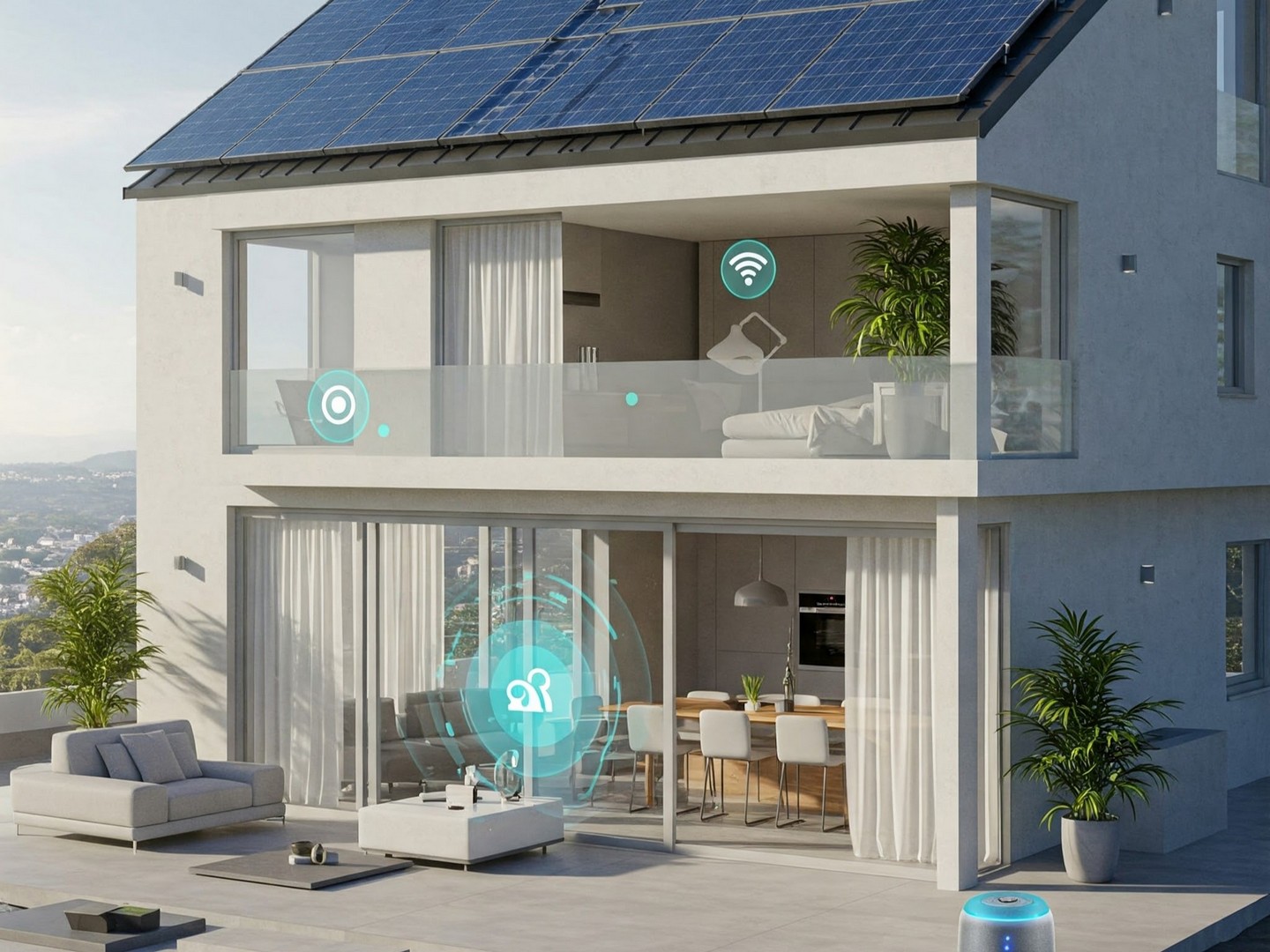Are We Sacrificing Security for Smart Features? The Smart Home Dilemma.
The Siren Song of Smart Living
In our relentless pursuit of convenience and seamless living, the smart home has emerged as a compelling vision. Imagine, for instance, being able to check who’s at your door while you’re sitting in your office across town. Additionally, you could adjust your thermostat or control your lights using just a simple voice command. This, in essence, is the promise of a futuristic lifestyle enabled by a connected ecosystem of smart devices. These include, among others, smart doorbells, thermostats, security cameras, and even refrigerators. The allure is undeniable, and the market for smart home technology continues its exponential climb, projected to reach staggering figures in the coming years.
However, beneath the glossy veneer of convenience lies a potentially unsettling truth: are we inadvertently trading security for smartness? As our homes become increasingly networked, they also become increasingly attractive targets for malicious actors. The very features that offer us ease and control can be exploited, turning our connected sanctuaries into digital battlegrounds. In this article, we explore the potential for hacking and data breaches. We also uncover hidden flaws in our smart home appliances. Finally, we ask a crucial question: Does the convenience we crave come at too high a security cost for the average user?
The Expanding Attack Surface: A Hacker’s Paradise
The beauty, and the inherent risk, of the smart home lies in its interconnectedness. Each new device we introduce to our network expands the “attack surface,” providing more potential entry points for cybercriminals. Unlike traditional security systems that often operated on closed networks, smart home devices are frequently connected to the internet, making them accessible from anywhere in the world, including the shadowy corners inhabited by hackers.
Consider a seemingly innocuous smart bulb. It effectively dims your lights when you tell it to. However, it also acts as an additional node on your Wi-Fi network, which could introduce its own vulnerabilities. Similarly, automated smart air conditioners learn your habits and make adjustments over time. These devices may detect patterns of absenteeism. If misused, that information could make your home a more attractive target for burglars.
The sheer diversity of manufacturers and the varying levels of security implemented in their devices further compound the problem. While some reputable brands invest heavily in security protocols, others may prioritise speed to market and cost-effectiveness, often at the expense of robust security measures. This fragmented landscape creates a breeding ground for vulnerabilities that t can be exploited across different devices and ecosystems.
Common Vulnerabilities: The Cracks in Our Connected Walls
Several common vulnerabilities plague smart home devices, making them susceptible to exploitation:
- Weak or Default Passwords: Many users don’t bother changing the default passwords on their smart devices. This leaves them highly vulnerable to brute-force attacks. You’d be surprised how common simple, easily guessable passwords like “admin” or “123456” still are. Using these is almost like handing hackers an open invitation.
- Unsecured Wi-Fi Networks: A weak or poorly configured home Wi-Fi network is the first line of defense against external threats. If your Wi-Fi password is weak or your router’s firmware is outdated, hackers can gain access to your entire network, including all connected smart devices.
- Lack of Encryption: Some devices transmit data unencrypted, meaning that sensitive information, such as video feeds from security cameras or voice commands to smart assistants, can be intercepted by eavesdroppers on the same network.
- Outdated Firmware and Software: Manufacturers regularly release firmware and software updates to patch security vulnerabilities. However, many users neglect to install these updates, leaving their devices exposed to known exploits.
- Insecure APIs and Cloud Services: Smart home devices often rely on Application Programming Interfaces (APIs) and cloud services to function remotely. Vulnerabilities in these backend systems can allow attackers to gain control over devices or access user data.
- Privacy Concerns and Data Harvesting: Many smart home devices collect vast amounts of personal data. This includes information like daily routines, energy consumption patterns, voice recordings, and even facial recognition data. Beyond the risk of direct hacking, this data raises serious privacy concerns. Security and privacy policies vary greatly between manufacturers. As a result, there are growing concerns about how this data is stored, used, and protected from unauthorised access or breaches.
The Potential for Hacking and Data Breaches: Nightmares Realised
The consequences of these vulnerabilities being exploited can range from minor inconveniences to serious security breaches and privacy violations:
- Unauthorised Access and Control: Hackers can gain unauthorised access to smart devices, allowing them to control lights, door locks, and even security cameras. Imagine a scenario where a malicious actor unlocks your front door remotely or disables your security system.
- Surveillance and Eavesdropping: Compromised security cameras can be used to monitor your home activities, providing intruders with valuable information about your routines or even allowing them to spy on your family. Smart speakers with voice assistants can be turned into eavesdropping devices, recording conversations without your knowledge.
- Denial of Service (DoS) Attacks: Hackers can overload smart devices with traffic, causing them to malfunction or become unresponsive, potentially disrupting essential home functions or rendering security systems useless.
- Data Theft and Identity Theft: Smart devices collect a wealth of personal information. A data breach could expose sensitive details like Wi-Fi passwords, location data, daily schedules, and even biometric information, potentially leading to identity theft or other malicious activities.
- Botnet Recruitment: Vulnerable smart devices can be recruited into botnets – networks of compromised devices controlled by a single attacker – and used to launch large-scale cyberattacks on other targets.
The Average User: Caught in the Crosshairs
While the technical intricacies of these vulnerabilities might seem daunting, the potential impact is deeply personal and relatable to the average user. We embrace smart home technology for the promise of convenience and security, often without fully understanding the underlying risks.
Users are often responsible for securing their own smart devices. However, many lack the technical expertise to configure complex security settings. Some may not even be aware of the potential threats. The “plug and play” nature of these devices can also create a false sense of security. As a result, users may assume the devices are inherently safe when they are not.
Furthermore, the constant push for new features in the smart home market drives intense competition. To stay ahead, manufacturers often focus on innovation and competitive pricing. As a result, they may cut corners on security testing and implementation. This can leave consumers with feature-rich devices that lack the robust security measures needed to protect their homes and data.
Navigating the Smart Home Security Landscape: A Call to Action
The risks associated with smart home devices are real, but they are not insurmountable. By adopting a proactive and informed approach, users can significantly enhance the security of their connected homes:
- Change Default Passwords Immediately: This is the most basic yet crucial step. Replace the manufacturer-set passwords with strong, unique passwords for each device and your Wi-Fi network.
- Secure Your Wi-Fi Network: Use a strong, complex password for your Wi-Fi and consider enabling WPA3 encryption if your router supports it. Keep your router’s firmware updated.
- Enable Two-Factor Authentication (2FA) Where Possible: For accounts associated with your smart home devices, enable 2FA to add an extra layer of security.
- Keep Firmware and Software Updated: Regularly check for and install firmware and software updates for all your smart devices. These updates often include critical security patches.
- Research Before You Buy: Before purchasing a smart device, research the manufacturer’s security reputation and read reviews that mention security features or concerns.
- Segment Your Network (Advanced): For more advanced users, consider segmenting your home network to isolate smart devices from your primary computers and sensitive data.
- Be Mindful of Permissions: When setting up new devices or apps, carefully review the permissions they request and grant only what is necessary.
- Disable Universal Plug and Play (UPnP) on Your Router: UPnP can create security vulnerabilities. Unless you absolutely need it for specific applications, disable it in your router settings.
- Regularly Review Connected Devices: Periodically review the devices connected to your home network and remove any that are no longer in use.
- Stay Informed: Keep abreast of the latest security threats and best practices related to smart home devices.
Smart Living, Securely
The smart home revolution offers incredible potential to enhance our lives, providing convenience, efficiency, and even increased security. However, this interconnected future is not without its risks. The hidden vulnerabilities within our smart devices can be exploited, turning our homes into potential targets for cybercriminals.
The key lies in striking a balance between embracing the benefits of smart technology and adopting a security-conscious mindset. By understanding the potential risks, implementing basic security measures, and demanding greater transparency and security from manufacturers, we can navigate the smart home landscape more safely.
The future of smart living doesn’t have to be a trade-off between convenience and security. By prioritising security from the outset, both as consumers and as an industry, we can build truly intelligent homes that are not only smart but also secure sanctuaries for ourselves and our families. The time to address these hidden vulnerabilities is now, before the convenience we cherish transforms into a security nightmare.







